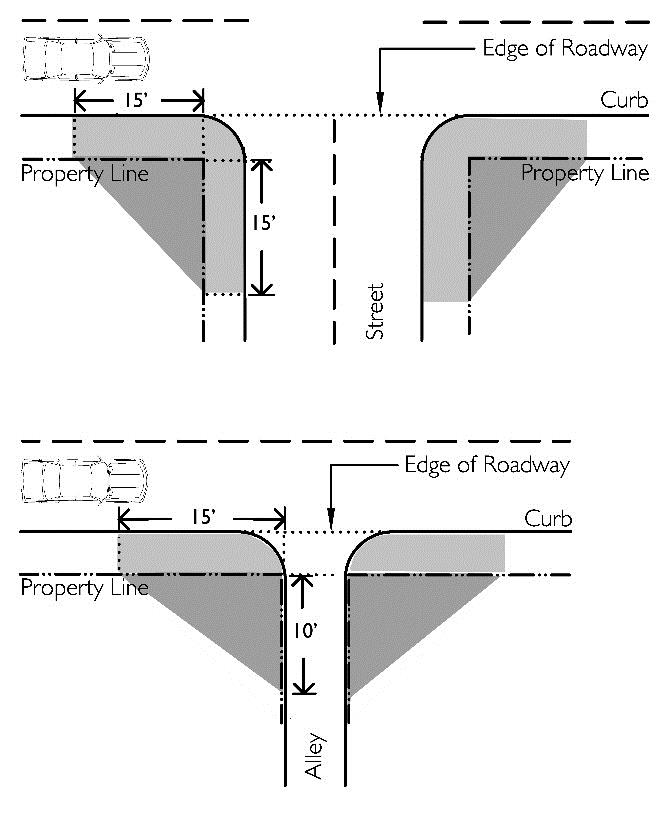18.2.4.040 Vision Clearance Area
No visual obstruction (e.g., planting, fence, wall, sign, structure, fence, or temporary or permanent obstructions) exceeding 2 ½ in height shall be placed in “vision clearance areas” at street intersections as illustrated in Figure 18.2.4.040.A and Figure 18.2.4.040.B. Street lights, post or poles supporting street signs, street lights, traffic control signs or devices, utility poles, on-street parking, and street trees exceeding this height may be located in vision clearance areas, unless the cumulative impact of the placement results in an obstruction to vision. Street trees shall be trimmed so that branches and foliage are eight feet above grade. Height in the vision clearance area shall be measured from the top of the curb.
The following distances shall be used in establishing the size of the vision clearance area.
A. In any residential zone, the minimum distance shall be 25 feet or, at intersections including an alley, ten feet.
B. In all other zones, the minimum distance shall be 15 feet or, at intersections, including an alley, ten feet, except that the C-1, E-1, and CM zones are exempt from these requirements. When the angle of intersection between streets, other than an alley, is less than 30 degrees, the distance shall be 25 feet.
C. The vision clearance standards established by this section are not subject to a Variance pursuant to chapter 18.5.5 Variances.

Figure 18.2.4.040.A. Vision Clearance Area in Residential Zones

Figure 18.2.4.040.B. Vision Clearance Area in Non-Residential Zones